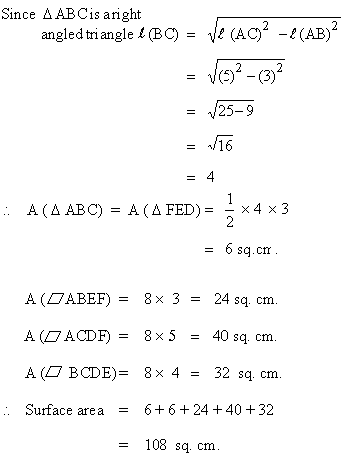8.2 Prism
Any solid formed by joining the corresponding vertices of two congruent polygons is called a prism.
Figure 8.2
The two congruent polygons are called the two bases of the prism. The lines connecting the corresponding vertices are called lateral edges and they are parallel to each other. The parallelogram formed by the lateral edges are called lateral faces.
(See figure 8.2)Prisms are of two types depending on the angle made by the lateral edges with the base.
If the lateral edges are perpendicular to the base the prism is called a right prism. If the lateral edges are not perpendicular to the base the prism is called an oblique prism.
Consider the right prism shown in Figure 8.3
 Figure 8.3
Figure 8.3 ABCDEF is a prism D ABC
& D
FED are congruent and seg. AF, seg. CD and seg. BE are perpendicular
to the planes containing D ABC
& D FED.
Also in DABC
m Ð
ABC = 900
, l (seg.
AB) = 3 cm & l (seg.
AC) = 5 cm
The surface area of the prism is the sum of the surface areas of all its surfaces.

base is unknown and height is 3 cm.

|